Inventor of the radio, Guglielmo Marconi built a sprawling hotel in Northern California’s Marconi State Historic Park in 1914. Things went off the rails in the 1960s, when it went on to become a drug and rehabilitation center, Synanon—and the breeding ground for a notoriously violent cult. The ‘80s saw the 62-acre site converted into a conference center. Now, it begins anew as a coastal retreat, Lodge at Marconi, designed by New York–based firm Home Studios.

A 17-month-long renovation has turned the storied site into a 45-guest room destination that preserves some of the historic interiors while showing deference to the area’s landscape. Some of the guest bathrooms feature the original tiles used in its 1960s iteration when the hotel was Synanon. The architects paired the past with Third Bay Tradition, referencing the midcentury modernism of Sonoma’s Sea Ranch Lodge, to tie the new property into the area. Updating the facade to an all-black paneling, Home Studios balances preserving aspects of the building while bringing it into the modern age.
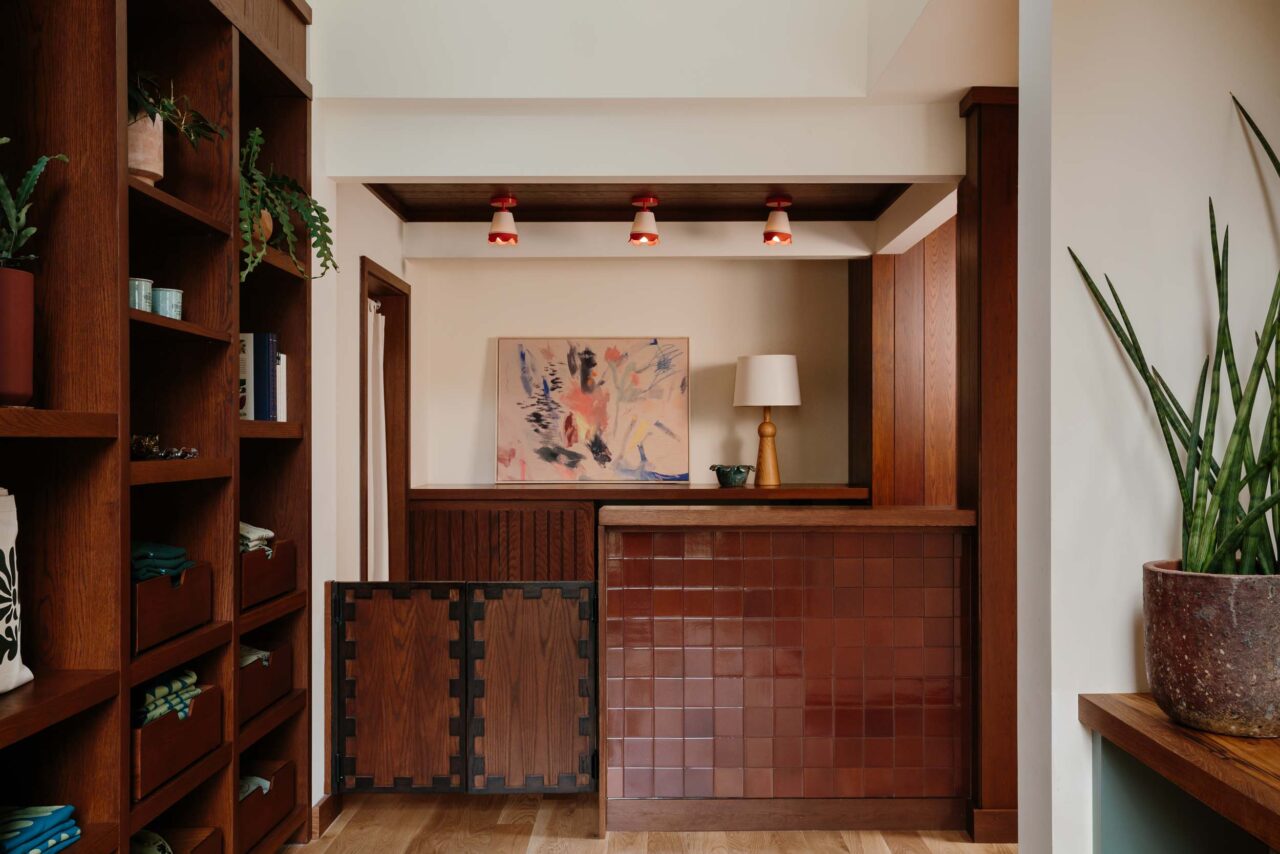
Visually, the hotel looks right at home within the land’s rolling hills, courtesy of the design’s many allusions to the local environment. This stems from the focus on locally made additions and materials, like cedar paneling and tiles from the Bay Area’s Heath ceramics. The color and material palette furthers this alignment as wood and earth-toned textiles set a cozy and unpretentious style. Handcrafted details and a plethora of windows imparting views onto the landscape make the hotel elevated yet still connected to the space. It’s in line with the hotel’s function as a refuge, which avoids including televisions to allow guests to better connect to the environment.
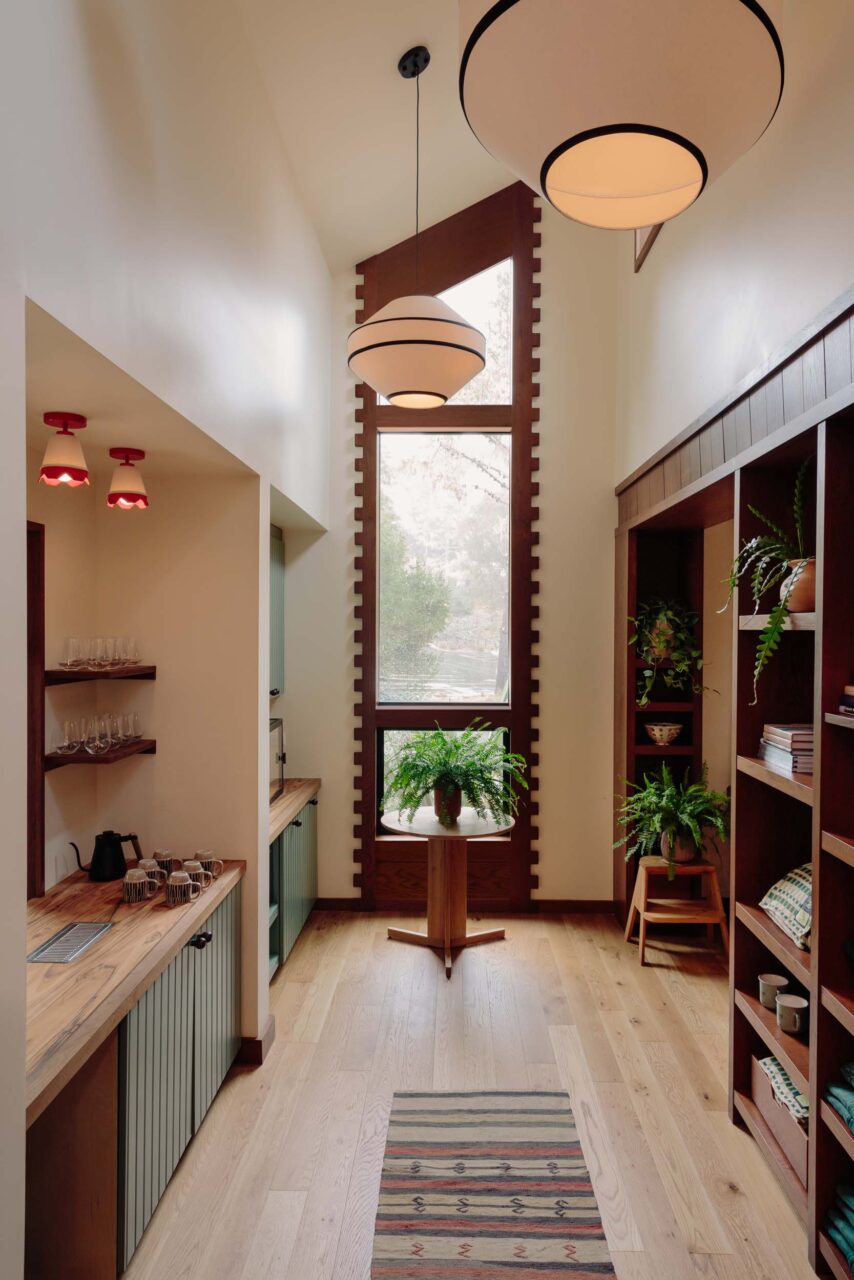
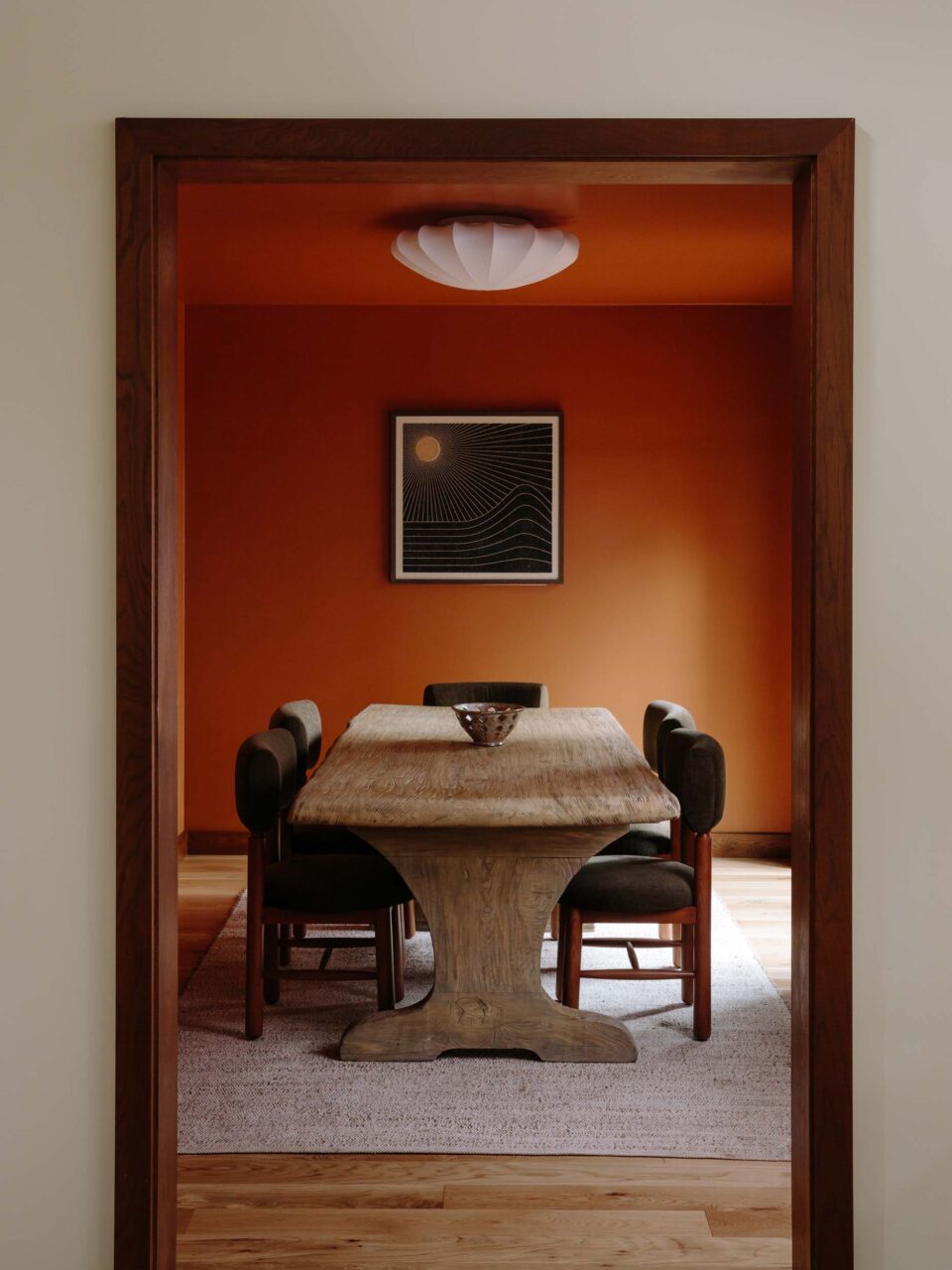
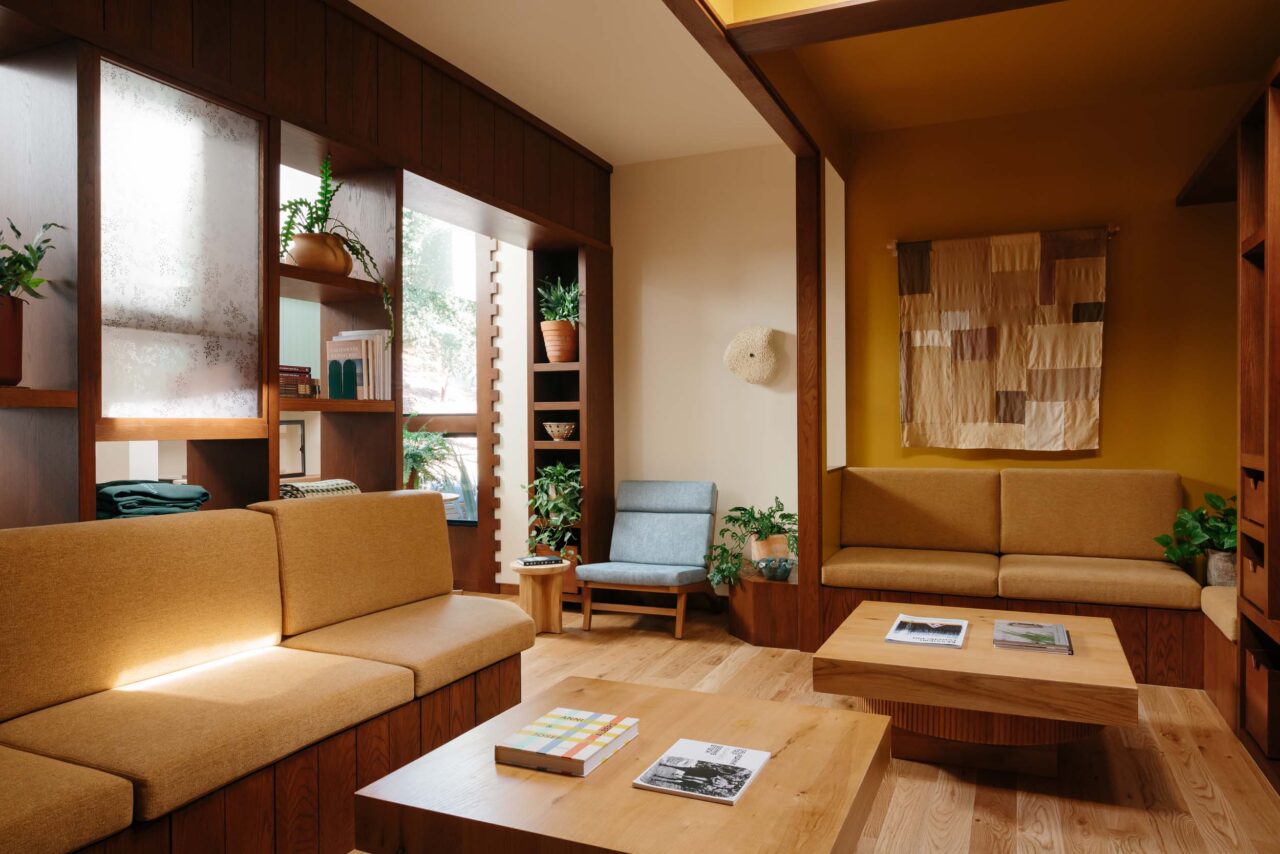
The nature-inspired interior fits with the studio’s references to camps. The exterior, which reads as a collection of connected and freestanding volumes that tower over pathways, helps organize the hotel as a collection of rooms that eschew a formal hotel lobby. Instead, the reception building hosts various seating areas, communal spaces, and a retail space.
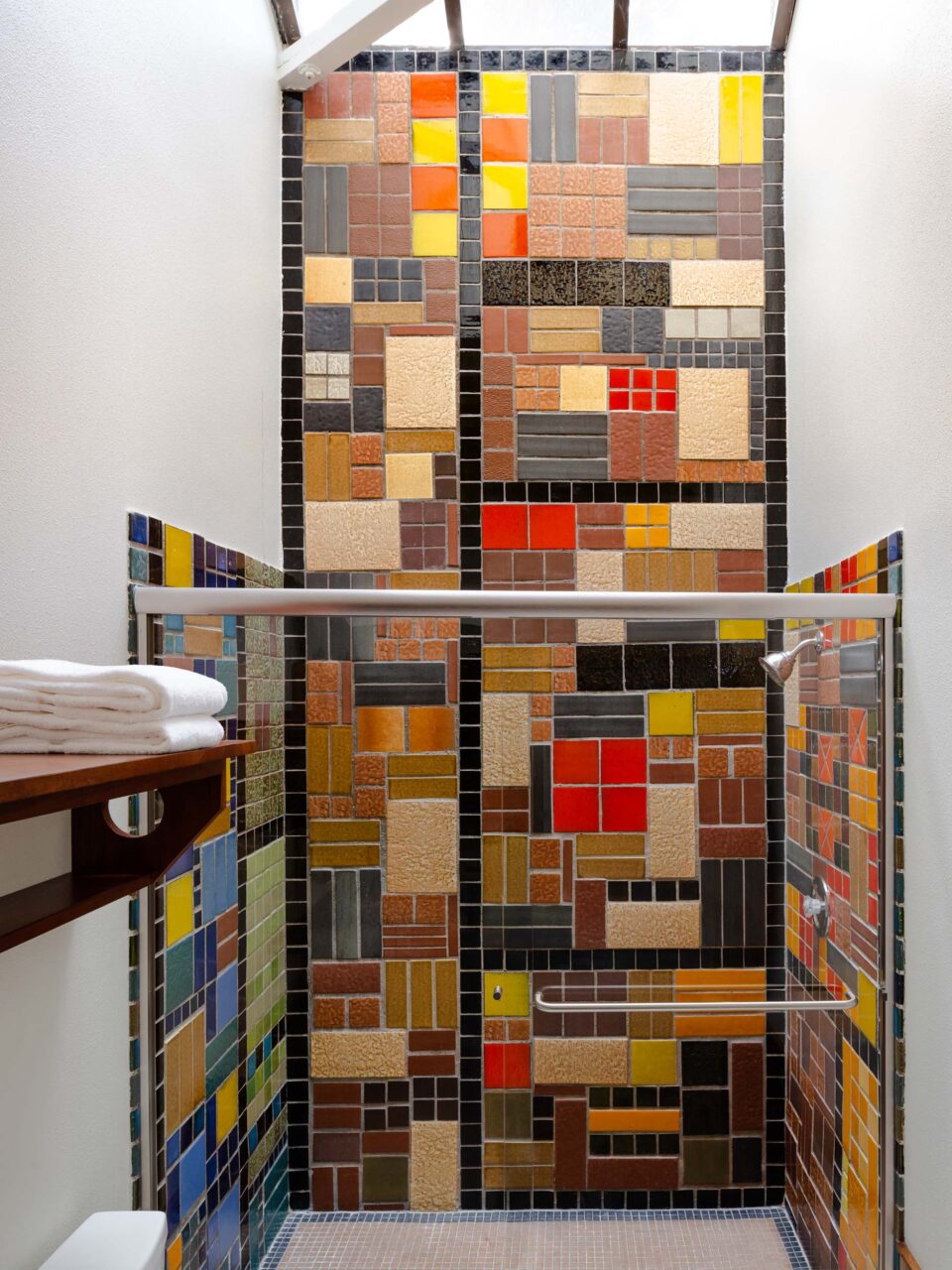
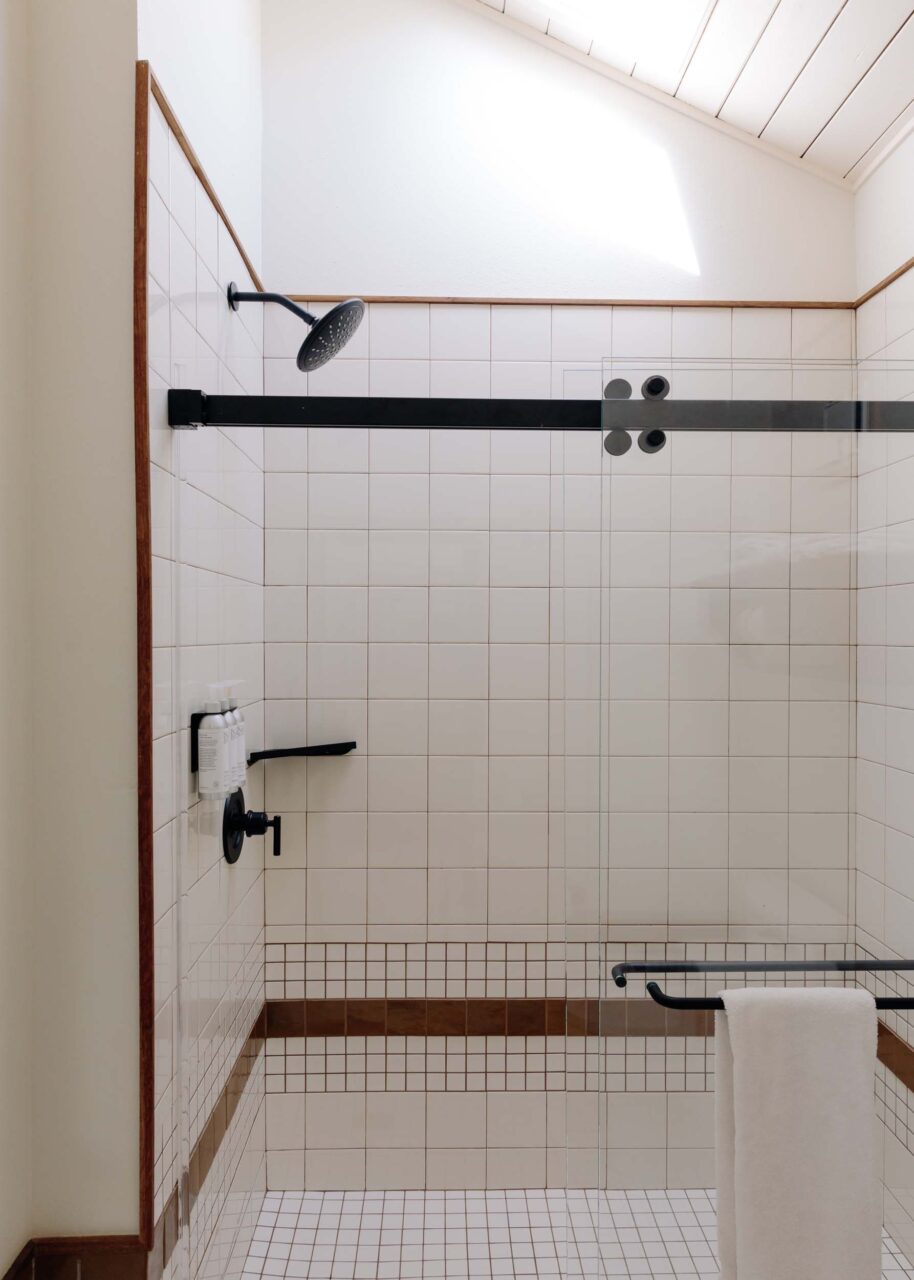
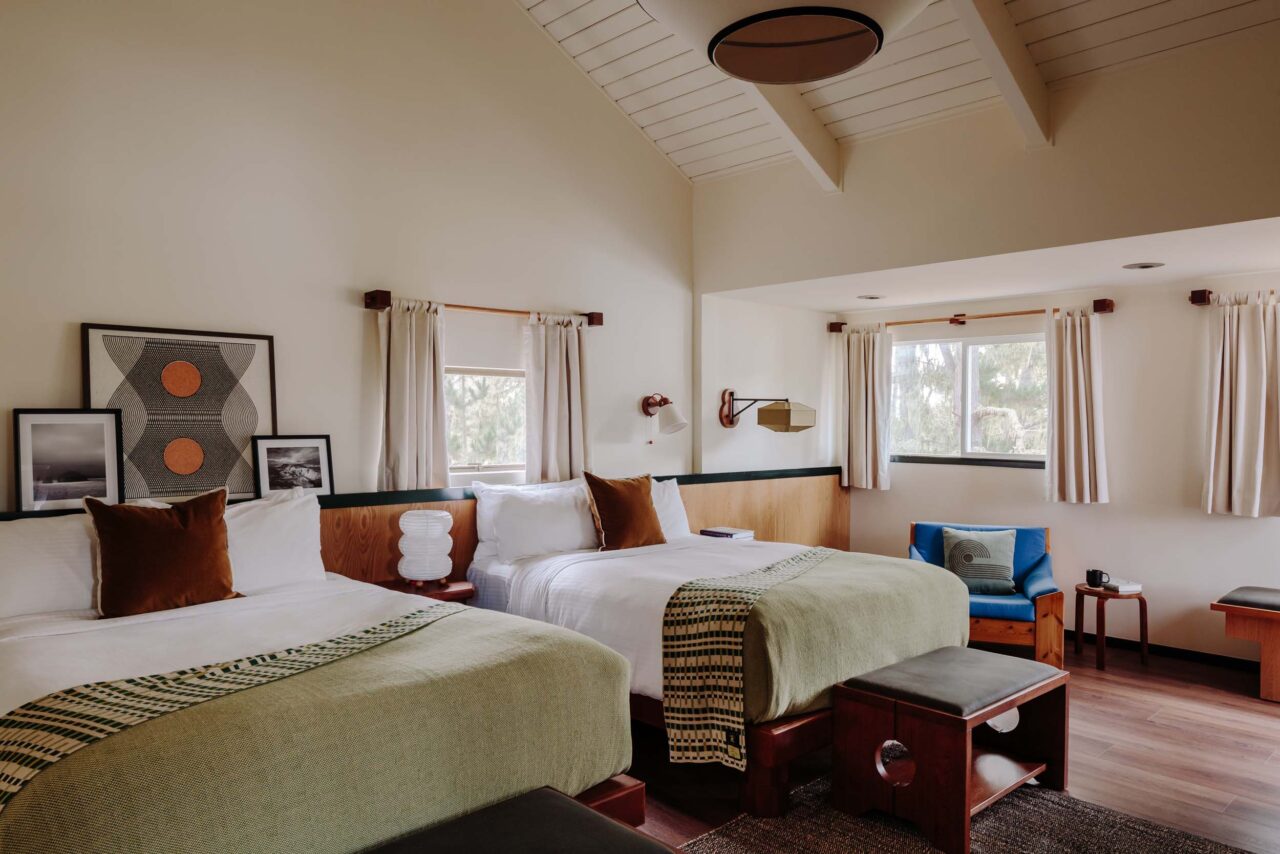
In some ways, the Lodge at Marconi is camp in the other sense of the word, too. Whimsical, idiosyncratic surprises are tucked into the nooks and crannies of the hotel. Wood cube wall art by California-based artist Lukas Geronimas Giniotis in the dining hall, waving wooden chairs, colorful tiled backsplashes, geometric headboards, and more playful touches enliven the space with charm.

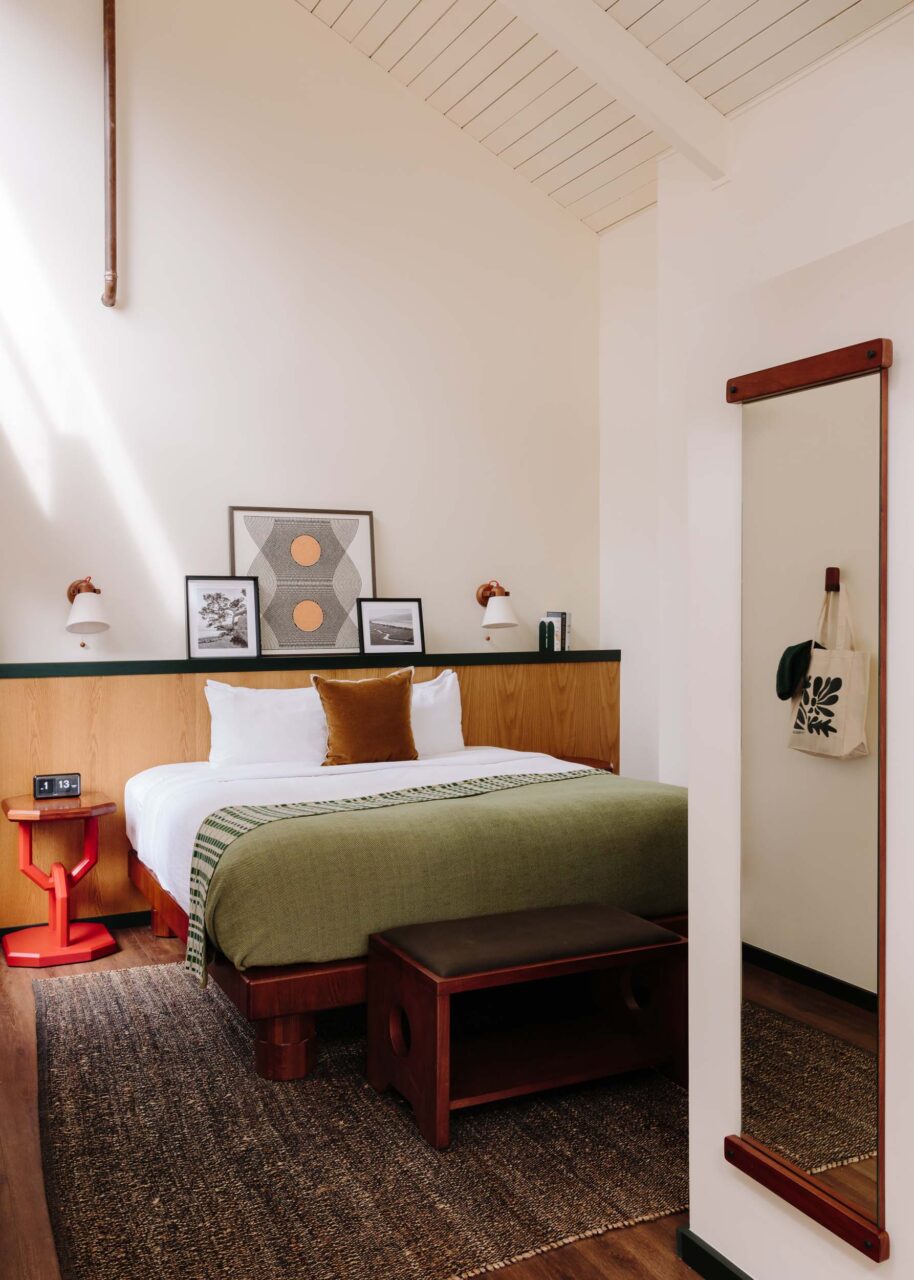
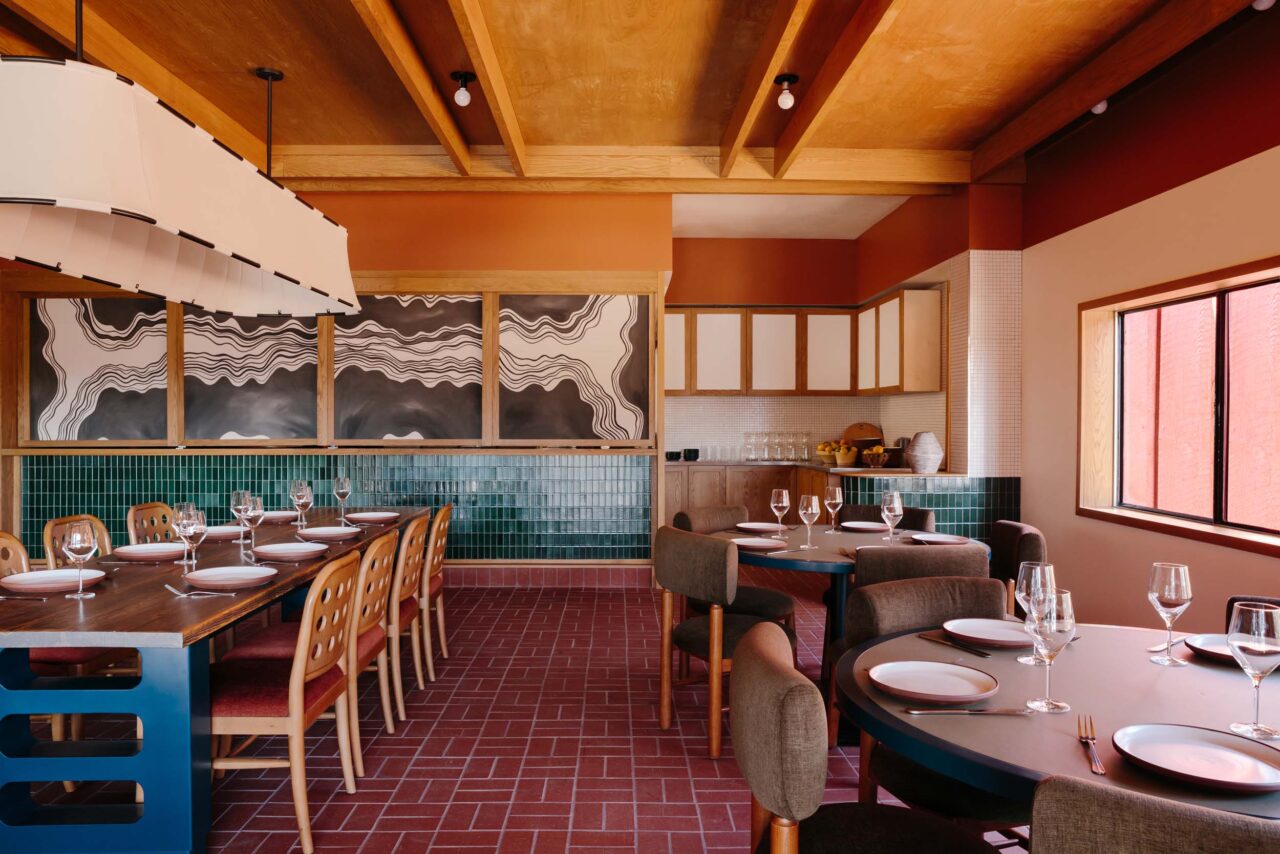
The rooms’ sloped, paneled roof and ample millwork draws on the Bay Area’s woodsy, ranch vernacular while crafting a relaxed travel destination. It combines the narrative of the space as well as the hotel’s function as a retreat. Much like the unexpected history of the property, the whimsical touches paired with an unfussy interior are part of the hotel’s cohesive and contemporary transformation.
